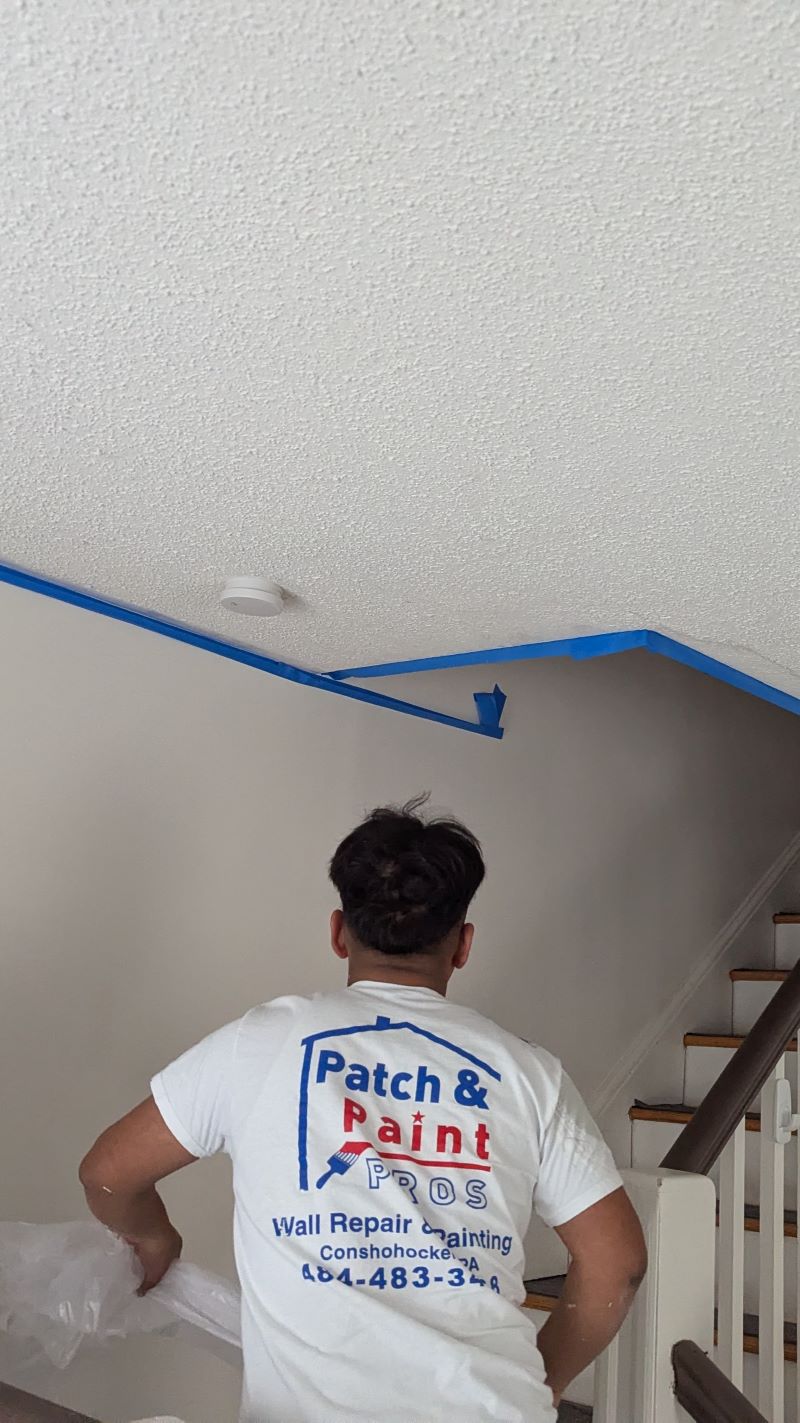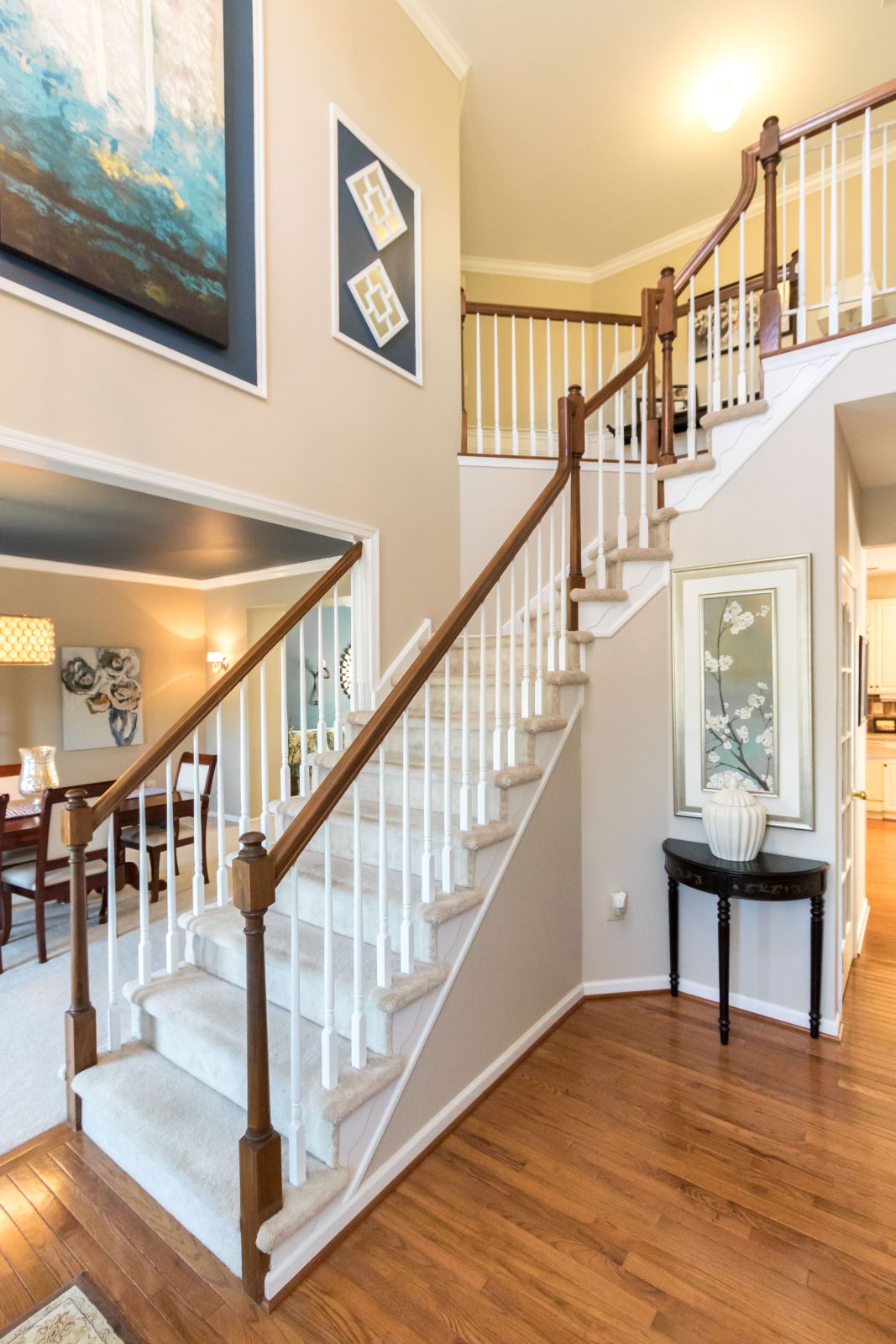Are you tired of looking at the peeling and cracking paint on your walls? It can be frustrating to see your once-beautiful paint job turn into an eyesore. Luckily, there are ways to tackle this problem and restore your walls back to their former glory.
In this article, we will provide you with tips and tricks from professional interior painters on how to deal with paint peeling and cracking. We will first discuss the causes of these issues so that you can understand what went wrong in the first place. Then, we’ll share prevention techniques to help you avoid future problems. Finally, we’ll show you how to fix peeling and cracking paint using step-by-step instructions that anyone can follow. So, grab a brush and let’s get started!
Understanding the Causes of Paint Peeling and Cracking
You might be wondering why your paint is peeling and cracking, but don’t worry, we’ve got you covered with the common causes. One of the most common triggers for peeling and cracking is moisture. When moisture gets under the paint, it can cause it to lift from the surface and eventually peel off. This can happen when there are leaks in your roof or walls, or when humidity levels are high.
Another common cause of paint problems is poor preparation. If a surface isn’t properly cleaned or primed before painting, the new coat won’t adhere properly and may begin to crack or peel over time. In addition, using cheap or low-quality paint can also lead to issues down the line. By identifying these problems early on and taking steps to address them, you can avoid costly repairs and keep your painted surfaces looking great for years to come.
Prevention Techniques
To avoid future damage, it’s important to regularly inspect and maintain the surfaces in your home. This means checking for any peeling or cracking paint and addressing it immediately. Here are some prevention techniques that professional painters recommend:
- Surface preparation: Before applying paint, make sure the surface is clean, dry, and free of any loose or flaking paint. Use a scraper or sandpaper to smooth out any rough spots or bumps.
- Moisture control: Moisture can cause paint to peel and crack over time. Make sure there are no leaks in your home that could lead to water damage. In areas with high humidity, consider using a dehumidifier to keep moisture levels under control.
- Quality materials: Invest in high-quality paints and primers that are specifically designed for the surface you’re painting. Cheap products may save you money upfront but will likely lead to more problems down the line. By taking these preventative measures, you can ensure that your painted surfaces remain looking fresh and vibrant for years to come!
How to Fix Peeling and Cracking Paint
Fixing peeling and cracking paint can be a frustrating task, but with the right preparation and materials, it can be accomplished quickly and effectively. The first step is to identify the cause of the problem. If the surface was not properly cleaned or primed before painting, then that could be the root of the issue. In this case, you will need to scrape away all loose paint and sand down any rough spots before applying a new layer of primer followed by fresh paint.
If mold or mildew growth is causing your paint to peel, it’s important to remove it completely before repairing any damage. This may involve using an anti-fungal solution or bleach mixture to clean the affected area thoroughly. Once cleaned, make sure to allow enough time for the surface to dry completely before proceeding with repair methods.
Peeling and cracking paint are common on surfaces such as wood siding, trim work, ceilings, walls in high humidity areas like bathrooms and kitchens, etc. Regardless of where it occurs though; if left untreated or improperly repaired – could lead to more extensive damages over time. By following these tips from professional painters on how best fix peeling & cracking paints – you’ll be able avoid costly repairs down line while keeping your home looking beautiful!
Tips and Tricks from Professional Painters
Learning from experienced painters can provide valuable insight into effectively addressing paint issues such as peeling and cracking. Here are some tips and tricks from these professionals that you can use when painting your home:
- Always prepare the surface properly before painting by cleaning it thoroughly, sanding any rough spots, and priming if necessary.
- Use high-quality materials, including paints and brushes or rollers, to ensure a smooth finish that will last.
- Be mindful of the weather conditions while painting – avoid extreme temperatures or humidity levels that could affect drying times or adhesion.
- Experiment with painting techniques to achieve interesting textures or effects, but don’t be afraid to stick with classic methods if it suits your taste.
In addition to addressing peeling and cracking paint specifically, professional painters also have valuable advice for choosing colors that will look great in your home. Some things to keep in mind include considering the existing décor and natural lighting in each room, testing samples on different walls throughout the day to see how they appear under various conditions, and being open-minded about unexpected color combinations. With a little guidance from those who know best, you can tackle any paint project with confidence!
Maintaining Your Paint Job
Proper maintenance of your painted surfaces is key to preserving their appearance and longevity, ensuring that your home remains a beautiful and inviting space for years to come. Regular cleaning is essential in keeping dirt and grime from building up on your walls, which can cause paint to peel or crack. Use a soft cloth or sponge with mild soap and warm water to gently clean the surface, being careful not to scrub too hard as this can damage the paint.
In addition to regular cleaning, touch ups are necessary from time to time. Small nicks or scratches can be easily repaired by sanding the area lightly and applying a coat of matching paint. Choosing the right paint for touch ups is important as different finishes may look different when applied over an existing finish. It’s always best to keep some extra paint on hand so you’re prepared for any minor repairs that need to be made. By following these simple maintenance tips, you can ensure that your painted surfaces remain looking fresh and vibrant for years to come.
Final Thoughts
Now that you’re equipped with knowledge about the causes of paint peeling and cracking, prevention techniques, how to fix it, and valuable tips from professional painters, you’re ready to confidently tackle your painting project. It’s crucial to ensure proper surface preparation before painting, utilize high-quality materials, and be mindful of extreme temperatures and humidity levels during painting or when storing paint cans. If you do happen to notice signs of peeling or cracking paint, there’s no need to panic. By implementing the sanding, priming, and repainting techniques discussed in this article, your walls will regain their pristine appearance.
In order to extend the lifespan of your freshly painted surface, regular maintenance is essential. Regular cleaning and timely touch-ups will help prevent future issues with peeling or cracking paint. Show your pride in your space by dedicating time and effort to maintain the beautiful finish on your walls. With the invaluable tips and tricks from professional painters at your disposal, you’ll be able to achieve a flawless paint job that stands the test of time.
If you’re considering a painting project for a commercial or large-scale setting, it may be beneficial to hire a reputable commercial painting company. Such companies specialize in providing painting services for various types of properties, including offices, retail spaces, warehouses, and more. They have the expertise, equipment, and workforce to handle projects of any scale, ensuring a high-quality finish and minimizing disruption to your business operations.
When budgeting for your painting project, it’s important to consider the average cost associated with professional painting services. The total cost will depend on factors such as the size of the area to be painted, the number of coats of paint required, the complexity of the project, and any additional services needed, such as surface repairs or wall preparation. It’s advisable to obtain quotes from different painting contractors to compare prices and services to ensure you receive a fair and accurate estimate. By following these guidelines and utilizing the expertise of professional painters or commercial painting companies, you’ll be well on your way to achieving a flawless and long-lasting paint job for your space.






